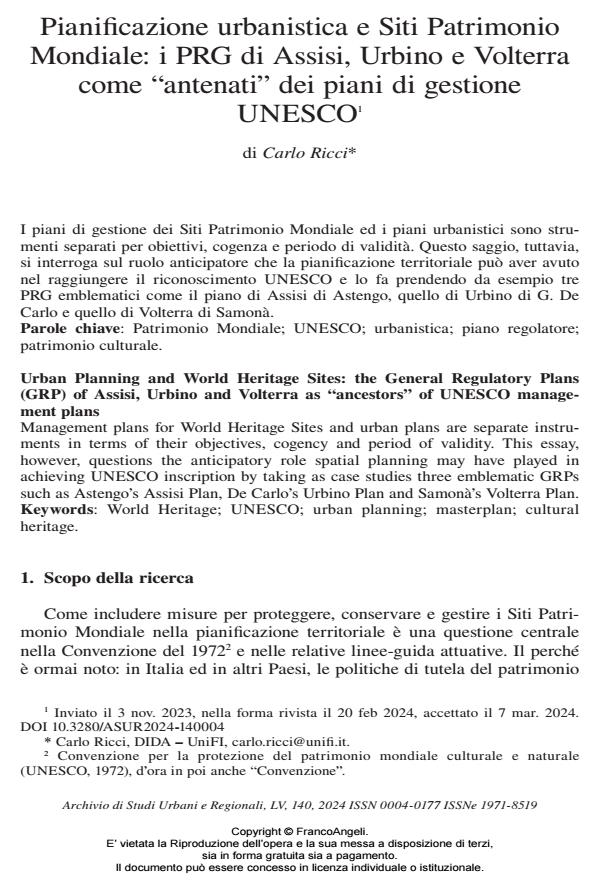Pianificazione urbanistica e Siti Patrimonio Mondiale: i PRG di Assisi, Urbino e Volterra come “antenati” dei piani di gestione UNESCO
Titolo Rivista ARCHIVIO DI STUDI URBANI E REGIONALI
Autori/Curatori Carlo Ricci
Anno di pubblicazione 2024 Fascicolo 2024/140
Lingua Italiano Numero pagine 22 P. 80-101 Dimensione file 214 KB
DOI 10.3280/ASUR2024-140004
Il DOI è il codice a barre della proprietà intellettuale: per saperne di più
clicca qui
Qui sotto puoi vedere in anteprima la prima pagina di questo articolo.
Se questo articolo ti interessa, lo puoi acquistare (e scaricare in formato pdf) seguendo le facili indicazioni per acquistare il download credit. Acquista Download Credits per scaricare questo Articolo in formato PDF

FrancoAngeli è membro della Publishers International Linking Association, Inc (PILA)associazione indipendente e non profit per facilitare (attraverso i servizi tecnologici implementati da CrossRef.org) l’accesso degli studiosi ai contenuti digitali nelle pubblicazioni professionali e scientifiche
I piani di gestione dei Siti Patrimonio Mondiale ed i piani urbanistici sono strumenti separati per obiettivi, cogenza e periodo di validità. Questo saggio, tuttavia, si interroga sul ruolo anticipatore che la pianificazione territoriale può aver avuto nel raggiungere il riconoscimento UNESCO e lo fa prendendo da esempio tre PRG emblematici come il piano di Assisi di Astengo, quello di Urbino di G. De Carlo e quello di Volterra di Samonà.
Parole chiave:Patrimonio Mondiale; UNESCO; urbanistica; piano regolatore; patrimonio culturale.
Carlo Ricci, Pianificazione urbanistica e Siti Patrimonio Mondiale: i PRG di Assisi, Urbino e Volterra come “antenati” dei piani di gestione UNESCO in "ARCHIVIO DI STUDI URBANI E REGIONALI" 140/2024, pp 80-101, DOI: 10.3280/ASUR2024-140004